Procedures
Breast Implant Choices
Breast augmentation using Breast Implants offers a myriad of choices, each tailored to meet individual preferences and anatomical needs. There are a lot of options out there, and it’s all about finding what’s right for you. As you look into breast implants, it’s important to know about the different types, shapes, and ways they can be placed. Every choice you make matters in getting the look you want.
Thanks to new medical devices and better surgery methods, there are more choices now than ever. If you’re thinking about getting breast implants, whether for medical reasons, to change how you look, or a bit of both, it’s key to know your stuff.
Chester Consultant Plastic Surgeon Anca Breahna performs breast implant surgery, as well as other face, body and skin procedures.
Download Miss Breahna Breast Augmentation Guide
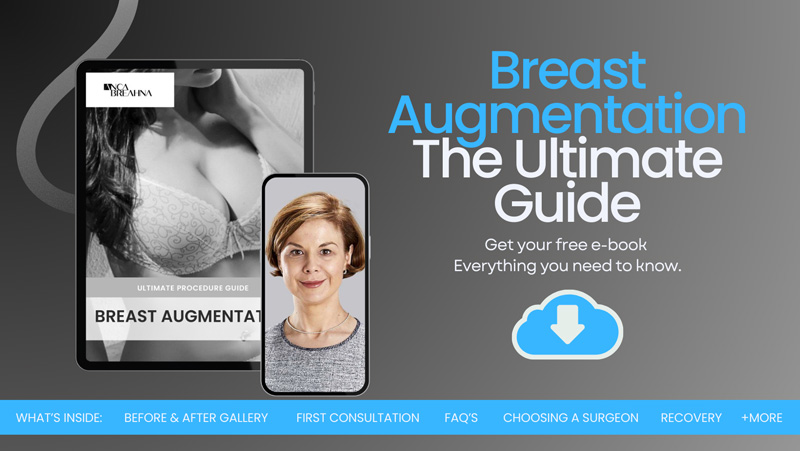
See more plastic surgery guides.
Factors to Consider when Choosing the Best Breast Implants
When making the important decision of choosing breast implants, several factors warrant careful consideration.
- First and foremost, contemplate the type of implant – saline or silicone – that aligns with your desired look and feel
- Evaluate the implant size and shape, ensuring it complements your body proportions and desired outcome
- Reflect on the projection and profile of the implant, as this influences the overall contour
- Texture matters too – smooth or textured implants – and their potential impact on aesthetics and comfort
- Deliberate on the incision placement that suits your preferences and healing process
- Long-term implications like durability and potential revisions should also be weighed
- Ultimately, each facet contributes to a decision tailored to your unique needs and aspirations
Before you decide on breast augmentation, it’s best to know your options and understand which breast implant choices may be best suited for your body and desires. Anca will offer guidance, but having prior knowledge can help you communicate your wishes more clearly. Here are the factors to consider:
1. Breast Implant Type – Saline or Silicone Breast Implants
When you’re considering this procedure, one of the first breast implant choices you’ll face is the type of implant. Let’s look at the two most common options: saline and silicone implants.
Saline Implants
Saline implants consist of a silicone outer shell filled with sterile salt water (saline). They can be pre-filled to a predetermined size, or they can be filled during surgery to adjust the size.
Pros:
- If a saline implant leaks, the saline (salt water) will be absorbed safely by your body
- Typically, the incision required for saline implants can be smaller than for silicone implants, because your plastic surgeon fills them after insertion
- They may be more easily adjustable in terms of size, as your plastic surgeon can alter the amount of saline during surgery
Cons:
- Some people feel that saline implants don’t mimic the feel of natural breast tissue as closely as silicone implants
- There’s a potential for visible rippling or wrinkling, especially if you have thin skin or little natural breast tissue
Silicone Implants
Silicone implants are made of a silicone outer shell filled with a silicone gel. They tend to feel a bit more like natural breast tissue compared to saline implants.
Pros:
- Silicone implants often offer a more natural feel and look because their consistency is similar to that of human fat
- There’s typically less chance of visible rippling or wrinkling with silicone implants
Cons:
- If a silicone implant leaks, the gel might stay within the implant shell, or it might escape into the breast implant pocket. This makes it harder to detect a rupture, which is why regular check-ups are important
- The incision for silicone implants might be larger than for saline implants because they come pre-filled
2. Breast Implant Size and Shape
The size and shape of the implants play a significant role in the final result. Consider your body proportions, lifestyle, and aesthetic preferences when choosing implant size. It’s crucial to strike a balance that enhances your natural beauty while maintaining a harmonious look. Implant shapes, such as round or teardrop, can affect the projection and contour of your breasts.
Implant Sizes
Volume-Based Sizing: Implants can be categorised based on their volume, usually measured in cubic centimetres (cc). The right volume largely depends on your personal preference, your body frame, and the recommendation of your plastic surgeon.
- Smaller Sizes (up to 250cc): These offer a subtle enhancement, often preferred by individuals wanting a natural look
- Medium Sizes (250cc to 500cc): A popular range for those seeking a noticeable but balanced enhancement
- Larger Sizes (above 500cc): These are for those who want a significant increase in breast size
Remember, it’s not just about the number. The same implant size can look different on different body types. It’s a good idea to discuss with Anca and try different “sizer” implants to gauge the potential outcome.
Implant Shapes
Round Implants: These are circular and tend to provide more fullness at the top of the breast. They’re versatile and can suit a variety of body shapes.
Pros:
- Offers a fuller look
- Less likely to cause visible abnormalities if they rotate
Cons:
- Might not mimic the natural slope of some breasts
Teardrop (Anatomical) Implants: These have a sloped contour and are fuller at the bottom than at the top, mimicking the natural shape of the breast.
Pros:
- Can provide a more natural-looking silhouette
- Often favoured for reconstructive surgeries
Cons:
- There’s a risk of the implant rotating, which might need another surgery to correct
3. Breast Implant Projection and Profile
Breast implants come in different projection levels, which determine how far the implants extend from your chest wall. The profile of the implant affects how much the implant projects forward versus its base width.
Implant Profiles
The profile of an implant refers to its width in relation to its projection. Let’s explore the common types:
Low Profile
- Description: These implants have a wider base and offer less forward projection
- Best Suited For: If you have a naturally wider chest or breast base, low profile implants might be a good fit. They spread out more across the chest, providing a subtle enhancement
Moderate Profile
- Description: As the name suggests, these are the middle-ground option with a balanced width-to-projection ratio
- Best Suited For: They can work well for a broad range of individuals, offering a natural look that isn’t too flat or overly projected
High Profile
- Description: These implants have a narrower base but offer more forward projection
- Best Suited For: If you’re seeking a more pronounced projection or if you have a narrower chest, high profile implants might be your pick
Implant Projection
Projection refers to how far the implant sticks out from the chest wall. The profile you choose will directly influence the projection.
Subtle Projection:
- Look and Feel: Provides a boost in size without being too noticeable. It respects the natural contours of the chest, offering a soft curve
- Best Suited For: If you’re aiming for a gentle enhancement and prefer a look that aligns closely with natural curves
Noticeable Projection:
- Look and Feel: This gives the chest a more defined, standout appearance. It’s more about making a statement and reshaping the silhouette
- Best Suited For: If you’re aiming for a dramatic difference and want your augmentation to be more evident
Maximum Projection:
- Look and Feel: As the name suggests, these implants provide the most significant forward projection
- Best Suited For: If you desire a profound change and seek the most pronounced silhouette possible
4. Breast Implant Texture
Breast implants can have either a smooth or textured surface. Textured implants are designed to reduce the risk of capsular contracture (scar tissue formation around the implant), but they may have a firmer feel. Smooth implants tend to move more naturally within the breast pocket. Your surgeon will discuss the advantages and disadvantages of each texture based on your specific situation.
Smooth Implants
- Description: As the name suggests, these implants have a soft and smooth outer shell
- Advantages: They tend to move more freely within the breast pocket, mimicking the natural movement of breasts. This can result in a more natural look, especially when lying down
- Considerations: Over time, there’s a possibility, though rare, for smooth implants to rotate or move within the pocket. It’s essential to discuss potential long-term effects with your plastic surgeon
Textured Implants
- Description: These implants have a rougher surface, almost like a fine sandpaper
- Advantages: The primary benefit is that the textured surface can help the implant adhere to the surrounding tissue, reducing the chance of implant movement or rotation
- Considerations: While they offer stability, there have been discussions and studies around textured implants and their potential association with certain medical conditions. Make sure to have a comprehensive conversation with your plastic surgeon about the risks and benefits
5 Breast Incision for Implant Placement
The incision for implant placement can be made in various locations, including under the breast fold, around the areola, or in the armpit. Each option has its advantages and potential drawbacks. Anca will help you determine the most suitable incision placement based on your anatomy and preferences.
When it comes to breast augmentation, not only do you need to consider the type, size, and texture of the implant, but also where it’s placed in relation to your breast tissue and muscles. Each placement option has its distinct set of advantages and considerations.
Submuscular (or Subpectoral):
In this placement, the implant is positioned beneath the pectoralis major muscle.
Advantages:
- Natural Appearance: Offers a more gradual transition from the upper chest to the breast, often resulting in a more natural contour
- Reduced Rippling: The muscle layer can mask potential rippling or wrinkling of the implant
- Imaging: This positioning can lead to less interference during mammograms
Considerations:
- Recovery: Recovery might be slightly longer with more initial discomfort due to the muscle being manipulated
- Animation Deformity: In some cases, muscle movement can cause the implant to move, creating what’s known as an animation deformity
Sub-glandular (or Submammary):
The implant is placed directly behind the breast tissue but in front of the pectoral muscle.
Advantages:
- Simpler Surgery: Often involves a shorter surgery time and less initial discomfort during recovery
- Flexibility: Allows for larger implants in some cases
- No Animation Deformity: Since the implant isn’t placed under the muscle, there’s no risk of animation deformity
Considerations:
- Visibility: There’s a higher chance of the implant edges being visible or palpable, especially in women with thinner skin or limited natural breast tissue
- Mammograms: The implant might obstruct more breast tissue in imaging
Dual Plane:
A combination method where the upper part of the implant is positioned beneath the pectoralis muscle, while the lower part is sub-glandular.
Advantages:
- Natural Look: Combines the natural appearance benefits of submuscular placement with the flexibility and easier recovery of sub-glandular
- Adaptability: Can be tailored to individual anatomies, making it versatile for a variety of breast shapes and sizes
Considerations:
- Complexity: The procedure is a bit more intricate than the other two methods
- Recovery: Recovery experience might vary based on how the dual plane technique is tailored to the patient
Long-Term Considerations
Breast implants are not lifetime devices, and they may require replacement or removal at some point due to factors like implant rupture or changes in personal preference. Understanding the longevity of your chosen implants and the potential need for future surgeries is essential for long-term planning.
Realistic Expectations
While breast augmentation can enhance your appearance, it’s essential to maintain realistic expectations. Discuss your desired outcome openly with your plastic surgeon, and understand the limitations and possibilities of the procedure.
Recovery and Aftercare
Consider the recovery process and aftercare involved with your chosen implants. Follow your plastic surgeon’s post-operative instructions carefully to promote proper healing and achieve optimal results.
5 Breast Incision for Implant Placement
The incision for implant placement can be made in various locations, including under the breast fold, around the areola, or in the armpit. Each option has its advantages and potential drawbacks. Anca will help you determine the most suitable incision placement based on your anatomy and preferences.
When it comes to breast augmentation, not only do you need to consider the type, size, and texture of the implant, but also where it’s placed in relation to your breast tissue and muscles. Each placement option has its distinct set of advantages and considerations.
Submuscular (or Subpectoral):
In this placement, the implant is positioned beneath the pectoralis major muscle.
Advantages:
- Natural Appearance: Offers a more gradual transition from the upper chest to the breast, often resulting in a more natural contour
- Reduced Rippling: The muscle layer can mask potential rippling or wrinkling of the implant
- Imaging: This positioning can lead to less interference during mammograms
Considerations:
- Recovery: Recovery might be slightly longer with more initial discomfort due to the muscle being manipulated
- Animation Deformity: In some cases, muscle movement can cause the implant to move, creating what’s known as an animation deformity
Sub-glandular (or Submammary):
The implant is placed directly behind the breast tissue but in front of the pectoral muscle.
Advantages:
- Simpler Surgery: Often involves a shorter surgery time and less initial discomfort during recovery
- Flexibility: Allows for larger implants in some cases
- No Animation Deformity: Since the implant isn’t placed under the muscle, there’s no risk of animation deformity
Considerations:
- Visibility: There’s a higher chance of the implant edges being visible or palpable, especially in women with thinner skin or limited natural breast tissue
- Mammograms: The implant might obstruct more breast tissue in imaging
Dual Plane:
A combination method where the upper part of the implant is positioned beneath the pectoralis muscle, while the lower part is sub-glandular.
Advantages:
- Natural Look: Combines the natural appearance benefits of submuscular placement with the flexibility and easier recovery of sub-glandular
- Adaptability: Can be tailored to individual anatomies, making it versatile for a variety of breast shapes and sizes
Considerations:
- Complexity: The procedure is a bit more intricate than the other two methods
- Recovery: Recovery experience might vary based on how the dual plane technique is tailored to the patient
Long-Term Considerations
Breast implants are not lifetime devices, and they may require replacement or removal at some point due to factors like implant rupture or changes in personal preference. Understanding the longevity of your chosen implants and the potential need for future surgeries is essential for long-term planning.
Realistic Expectations
While breast augmentation can enhance your appearance, it’s essential to maintain realistic expectations. Discuss your desired outcome openly with your plastic surgeon, and understand the limitations and possibilities of the procedure.
Recovery and Aftercare
Consider the recovery process and aftercare involved with your chosen implants. Follow your plastic surgeon’s post-operative instructions carefully to promote proper healing and achieve optimal results.
Procedures
Before & After
See the difference Breast Implant Choices
has made for our clients
Blur/Unblur Images
Blurred images may contain sensitive or explicit content. Please click the toggle button to reveal the images.
Breast Implant Type
Saline Implants
Saline implants consist of a silicone outer shell filled with sterile salt water (saline). They can be pre-filled to a predetermined size, or they can be filled during surgery to adjust the size.
Silicone Implants
Silicone implants are made of a silicone outer shell filled with a silicone gel. They tend to feel a bit more like natural breast tissue compared to saline implants.
Recovery and Aftercare
Consider the recovery process and aftercare involved with your chosen implants. Follow your plastic surgeon’s post-operative instructions carefully to promote proper healing and achieve optimal results.
Reviews
Patient satisfaction is the top priority for Anca. You can find how patients feel about her work below.
Outstanding results – I couldn’t be happier with the outcome
After many years of wanting to have a more feminine body I thought long and hard about having a breast augmentation. So I went on the journey to researching plastic surgeons. I then booked in a few consultations and there was no question about it, I wanted to DR. Breahna to do my surgery.
DR Anca Breahna was so kind, but her expertise and skills are phenomenal. I felt at ease and comfortable with her from my first visit. She was very informative and spent a lot of her time making sure I understood the procedure and the recovery that was involved with the surgery. I had several consultations before my surgery which was very reassuring to me, it also demonstrated that DR Anca Breahna really cares about her patients.
Dr Anca Breahna performed my breast augmentation with precision and achieved outstanding results, I couldn’t be happier with the outcome and the positive impact it has had on my life. The post-op after care has been second to none they are truly professional and genuinely care about your well being. I am just over 13 weeks post op and feeling so much more feminine and have gained my confidence back.
I would highly recommend DR Anca Breahna to anyone considering a breast augmentation.
My warmest thanks to DR Anca Breahna and all her team at The Nuffield Chester x

Dr Breahnna listened to me and what I wanted from my surgery. I am extremely happy with my results. I was treated as an individual and the whole process was amazing. Thank you
Breast augmentation

Choosing Miss Breahna for my Breast augmentation was the best choice I made! She was really helpful in all consultations, nothing was awkward, I felt comfortable at all times. She made sure I knew everything before making a decision. The day of my operation was a breeze, I was reassured everything was going to be fine, I had the best treatment and care. I am so happy with my results, I couldn’t praise miss Breahna anymore, I would recommend her to anyone, she’s an amazing surgeon!

Breast Augmentation with Areola Reduction: Expert Care, Natural Result
From day 1, I knew Miss Breahna was a surgeon I could trust. I received the utmost care and attention before, during and after the procedure. She made certain that I was aware of all the risks and managed my expectations in a professional manner. I opted for a breast augmentation with areola reduction, which comes with a greater likelihood of scar spreading.
A talented surgeon with a personal touch, Miss Breahna ensured I was well looked after the entire time. I’m delighted with the results – my new breasts look super natural and have given me the boost in confidence I needed after having 3 children. My scarring is now barely visible and my overall healing has been much smoother than I expected. Thank you Anca, 5 stars from me all the way!

After my first consultation with Anca I came away feeling 100% confident she was the surgeon I wanted to undertake my breast surgery. Right from the start Anca was friendly, professional and punctual, but more importantly she was realistic about my expectations. Anca gave me several chances to discuss and question the procedure, and ever put me under any pressure to go ahead. She was willing to spend time with me looking at before and after pictures.My op went ahead. All went well. She visited me twice during my overnight stay at the Grosvenor, Chester. The nurses spoke very highly of her as a surgeon. Unfortunately 2-3 wks post op I developed an infection due to my body rejecting the sutures. I’ve since been back to Chester every Monday, for the last 5 weeks, to see Anca and she has seen me in person every time to assess and dress the wound. She has made me feel very comfortable to contact her at any time if I have any worries.I’m now well on the mend and I love what Anca has helped me to achieve. Her aftercare is amazing!
You certainly couldn’t go wrong choosing Anca Breahna as your surgeon!
Thank you Anca
Joanne White

From the first time meeting Anca she listened to exactly what I was looking for in regards to my breast augmentation, she was honest with me about the size that was right for my body and put me at ease throughout the whole process. On the day of my surgery she again explained everything to me so I was aware of the procedure and what to expect. After surgery, Anca later came to see me to ask how I was feeling and also checked that everything looked ok and that I was comfortable and again the next morning before i was allowed home. I also had a phone call from Anca the day after to see how i had settled in at home and again how I was feeling, after the surgery I was left feeling very comfortable and able to see my new breasts a week after and am extremely happy with them, the cuts are very small and have healed nicely and my breasts still look natural but with more volume which was exactly what i was after. Thank you so much for giving me such a good experience after i was feeling very nervous about the whole procedure, i have definitely been looked after throughout and have already recommended Ms Breahna to others and will continue to do so.

Miss Breahna was absolutely fantastic and professional and did an amazing breast enlargement for me.
I would highly recommend Miss Breahna

Breast augmentation. Very professional service. Miss Breahna took her time to explain every step and I felt, at all times in very good hands. Every stage has been outstanding including post surgery care and follow ups. Her attention to detail is outstanding and I am more than happy with the results. Perfect in every way! Contact with Miss Breahna is always effortless, with prompt responses for any questions or queries both pre and post surgery.

From the beginning, Ms Breahna has treated me with the upmost care and consideration, with a gentle and professional manner in all aspects of the process. Ms Breahna’s expertise was invaluable when considering between breast augmentation and a mastopexy augmentation, with the most appropriate implant size and shape. Saying I am happy with the results is an understatement as I couldn’t have imagined my breasts to be as perfect as they are, with incredibly neat scars and, personally, no complications. I have thoroughly enjoyed the process due to Ms Breahna’s kind nature making me feel so at ease throughout, with unfathomable attention to detail and care. Thank you!

Anca is a professional who prides herself on her work. My new breasts are just perfect- not too big and so perky. The scars under them are small and have faded so much even now. My husband said I didn’t need them doing… but he says they are unbelievable now! So happy.
Further Reading
- Read Anca’s Blog on How to Get a Natural Looking Breast Augmentation Using Smaller Implants
- Read Anca’s Blog on What Can Be Done to Minimise Breast Implant Removal Scars
- Read Anca’s Blog on Breast Augmentation with Mentor Breast Implants
- Read Anca’s Blog on Benefits of Motiva Breast Implants
- Read Anca’s Blog on Glamorous Breasts with Large Breast Implants

Procedure
Frequently asked questions
What are the main types of breast implants available?
- There are primarily two types of breast implants: saline-filled and silicone gel-filled. Each has its benefits, with saline implants being filled with sterile salt water and silicone implants filled with a thick silicone gel. The choice between them often depends on individual preference, desired feel, and the recommendation of your plastic surgeon.
How long do breast implants last?
- While breast implants are designed to be long-lasting, they are not guaranteed to last a lifetime. On average, implants can last anywhere from 10 to 20 years without complications. However, it’s possible they might need replacement or adjustment due to various reasons like implant rupture, shifting, or other factors.
Is the breast implant surgery a one-time procedure?
- Not necessarily. While many individuals go years without needing a follow-up surgery, changes in preferences, complications, or the natural ageing process might lead to a desire or need for revision surgery in the future.
Can I breastfeed with breast implants?
- Many women with breast implants breastfeed successfully. The placement of the implant and the incision site can influence this. However, it’s essential to discuss your future breastfeeding plans with your plastic surgeon before the procedure.
Will breast implants affect mammograms?
- While implants can obscure certain parts of the breast during a mammogram, technicians are trained to handle this scenario. If you have breast implants, it’s vital to inform the mammography clinic beforehand so they can adjust their imaging technique accordingly.
Medical References about Breast Implants
- Information For People with Breast Implants – NSW Health
- Breast Implant Illness – Cleveland Clinic
- Breast Implant Safety – WebMD
- Breast Implants – WebMD
- Breast Implants: Saline vs. Silicone – Mayo Clinic
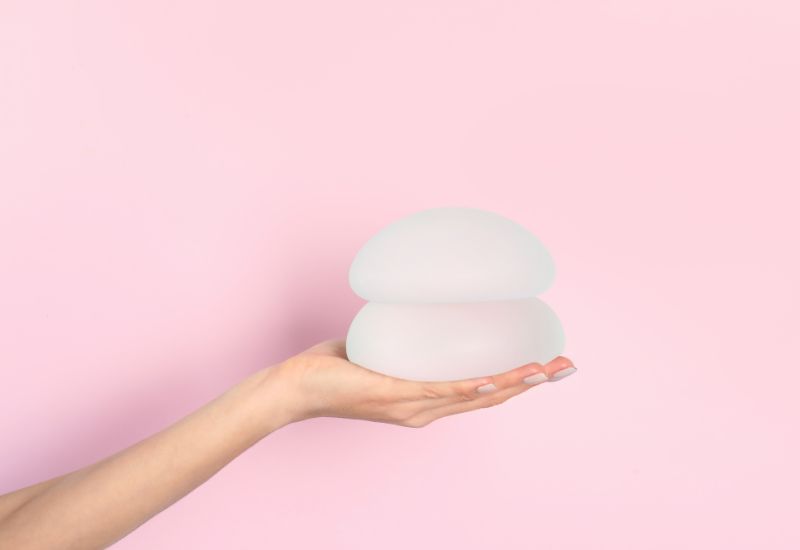
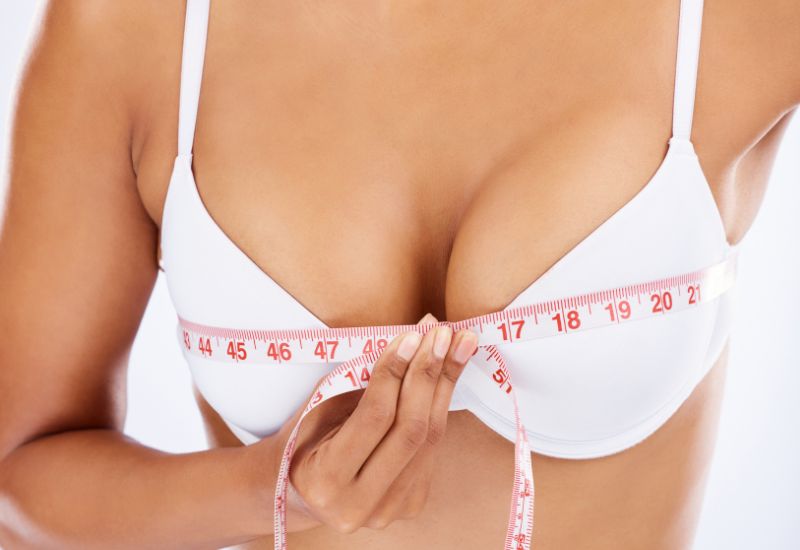
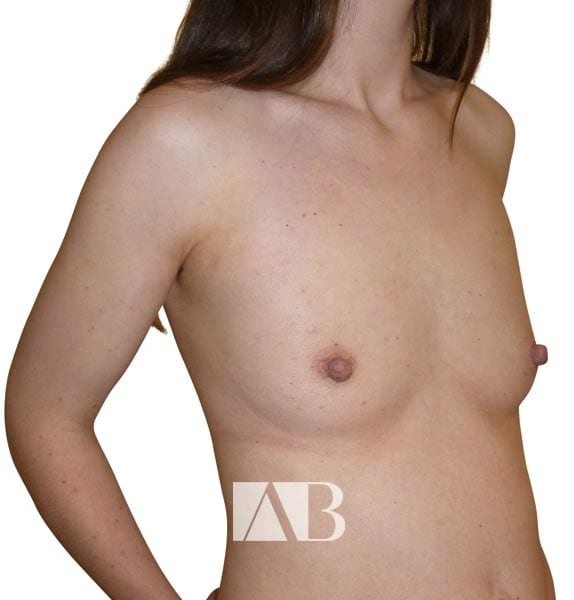
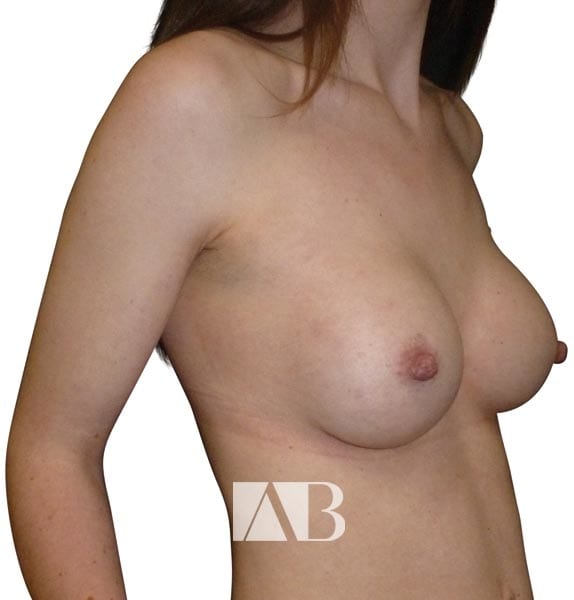
 Ms Anca Breahna, PhD, MSc, FEBOPRAS, FRCS (Plast) is a highly regarded Consultant Plastic Surgeon specialising in the field of Aesthetic and Reconstructive Plastic Surgery. Anca performs a range of
Ms Anca Breahna, PhD, MSc, FEBOPRAS, FRCS (Plast) is a highly regarded Consultant Plastic Surgeon specialising in the field of Aesthetic and Reconstructive Plastic Surgery. Anca performs a range of 